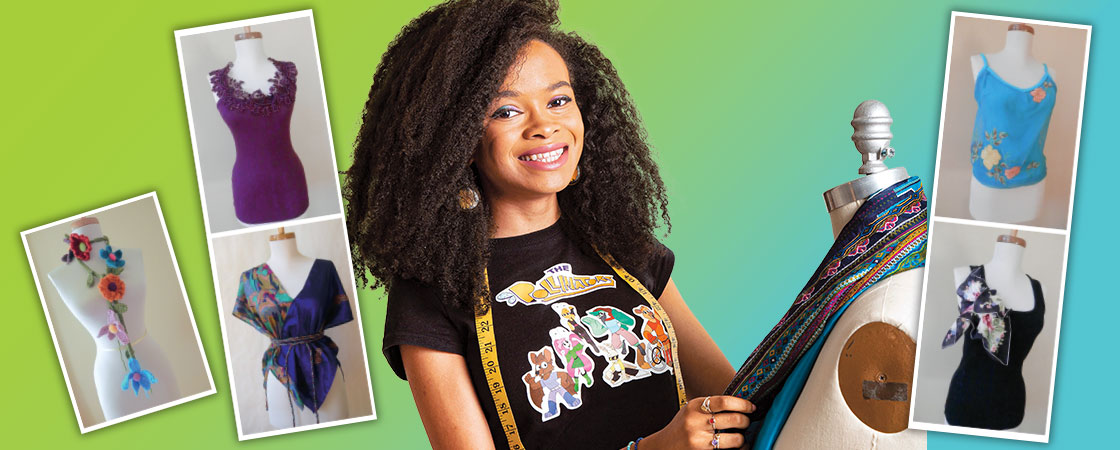Mackenzie Carro: What does it mean to be an eco-fashion designer?
Maya Penn: Eco-fashion designers create clothing in unique and innovative ways that have less of a harmful impact on our planet. We look at what kinds of materials and resources are needed to make clothing, and what impact those materials will have on the environment when that clothing is thrown away. Being a sustainable-fashion designer requires a lot of creative problem-solving and a passion for putting the planet first.
MC: When did you decide that you wanted to make eco-friendly clothing?
MP: I was a really nerdy and artsy kid. I’ve always had a passion for art and design, including fashion design. I’ve also always had a passion for the natural world: plants, animals, and ecosystems. So when I had an idea to start a fashion line, I was naturally inclined to start doing my own research on the fashion industry and its environmental impacts. What I discovered was mind-blowing, and I was shocked that sustainable fashion wasn’t talked about by more people. Based on what I learned, I knew I wanted to make my designs eco-friendly. I started by creating headbands from old fabric and vintage clothes that I had around the house. Soon, my friends and family started complimenting my designs, and that’s when I decided to start my own business. I soon started creating more eco-friendly items, such as scarves, blouses, hats, bags, jewelry, and more.
MC: Why is it important to make sure that our clothes are eco-friendly?
MP: A big contributor to climate change is carbon dioxide emissions, and the fashion industry emits an estimated 1.2 billion tons of carbon dioxide annually!** Also, did you know that an estimated 87 percent of the clothing people buy ends up in landfills or incinerators?*** These are just two examples of why it’s so important for the fashion industry to become more eco-friendly.
MC: What can we all do to be more environmentally friendly when it comes to our clothes?
MP: There are lots of things you can do to make your wardrobe eco-friendly. First, remember to really take care of your clothes to try and make them last as long as possible. The longer they stay out of a landfill, the better! For example, if something of mine gets a hole in it, I sew it instead of throwing it away. Or I love to turn my old clothes into totally new designs! There are so many awesome possibilities—have fun and get creative! Second, when you buy clothes, shop sustainably. The clothes that I wear are all either secondhand, meaning they were owned by someone else before me, or made with environmentally friendly materials.

